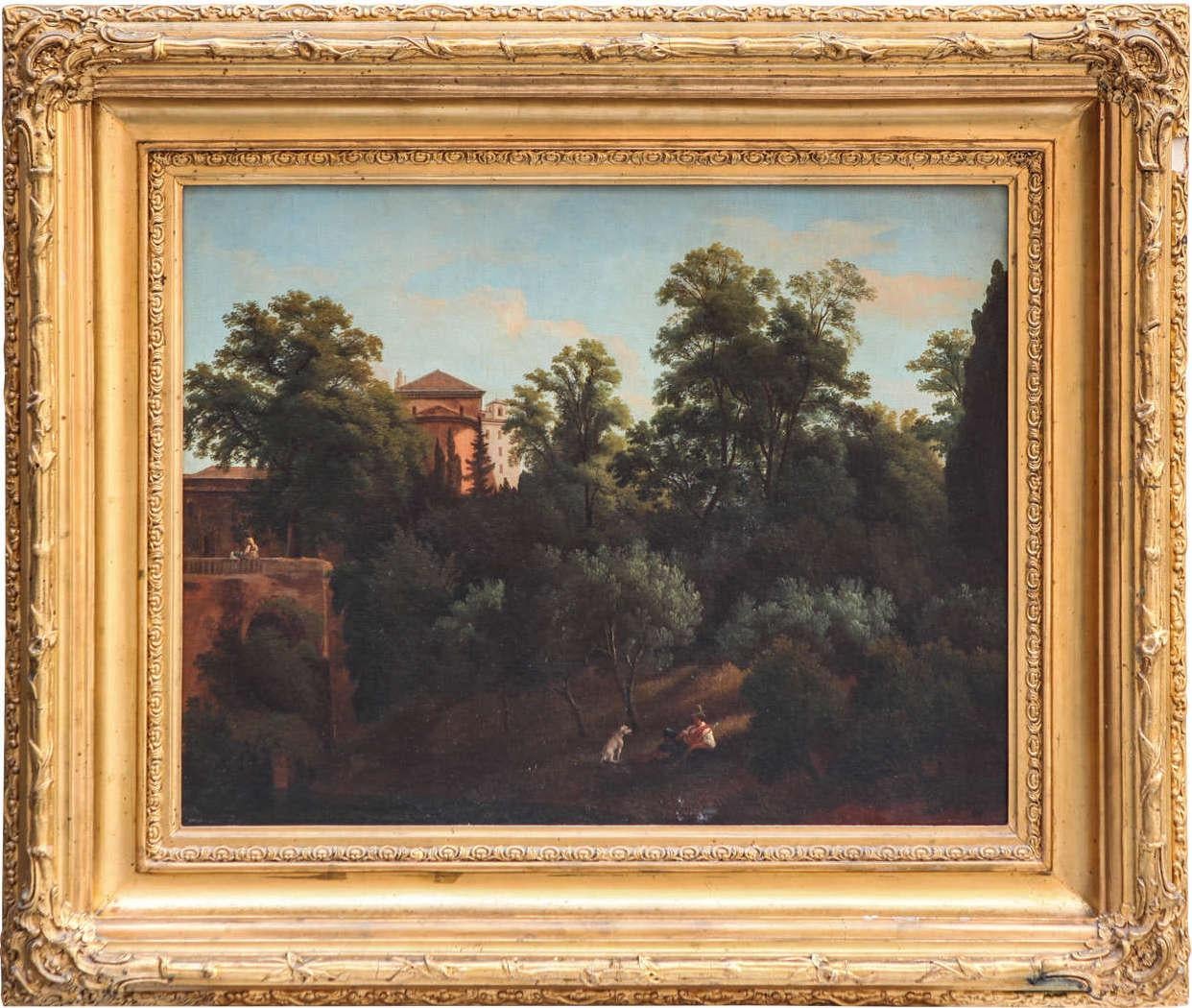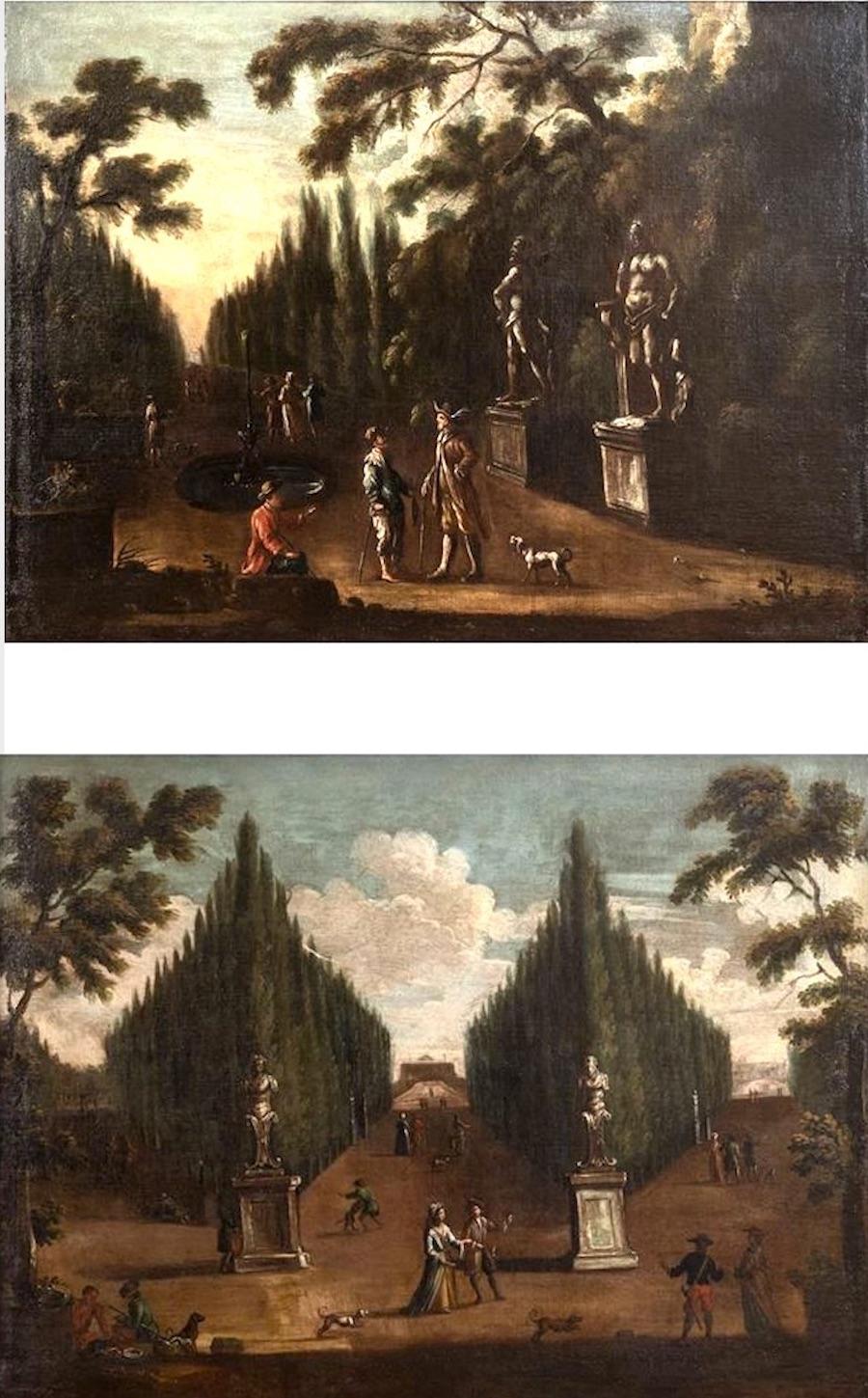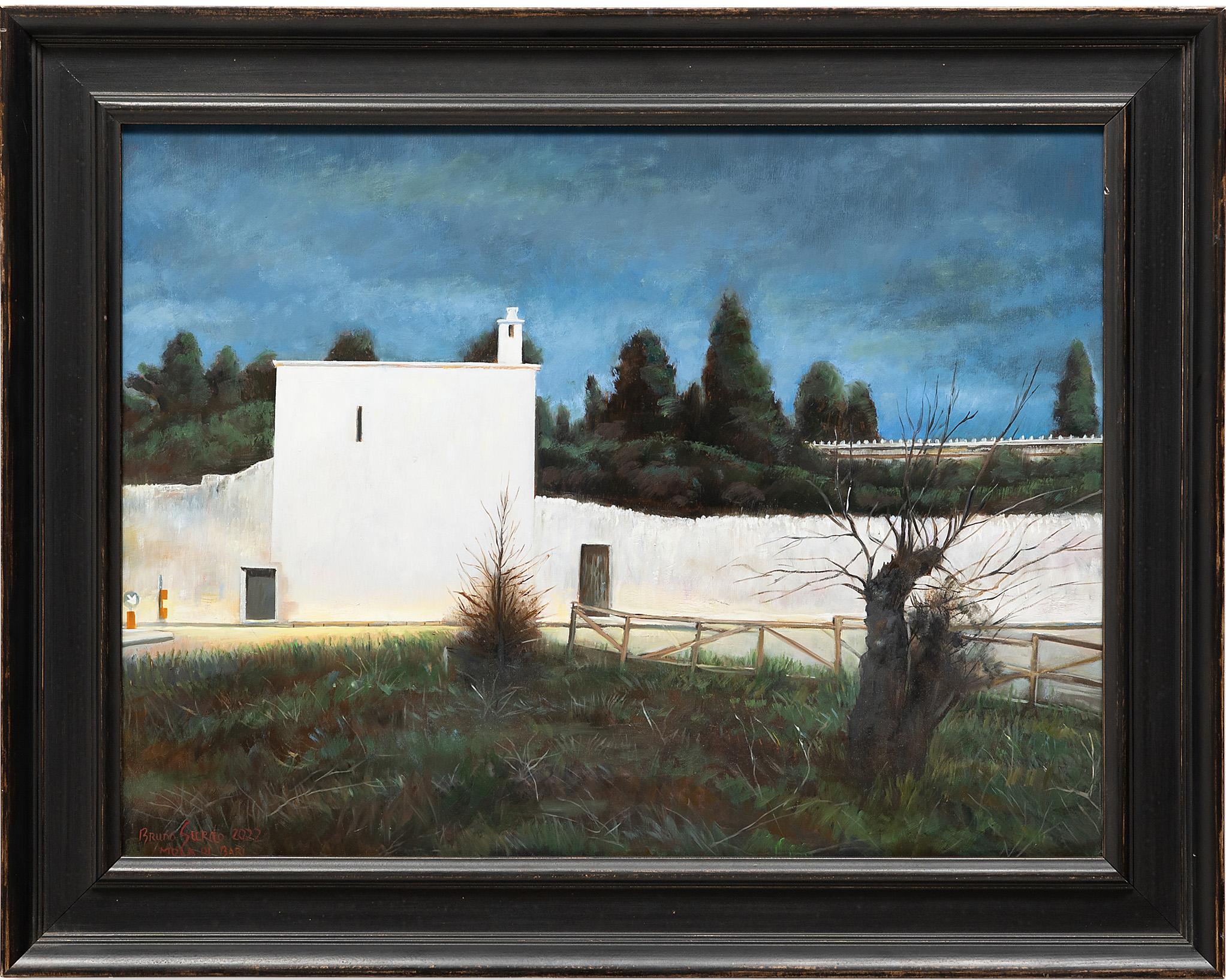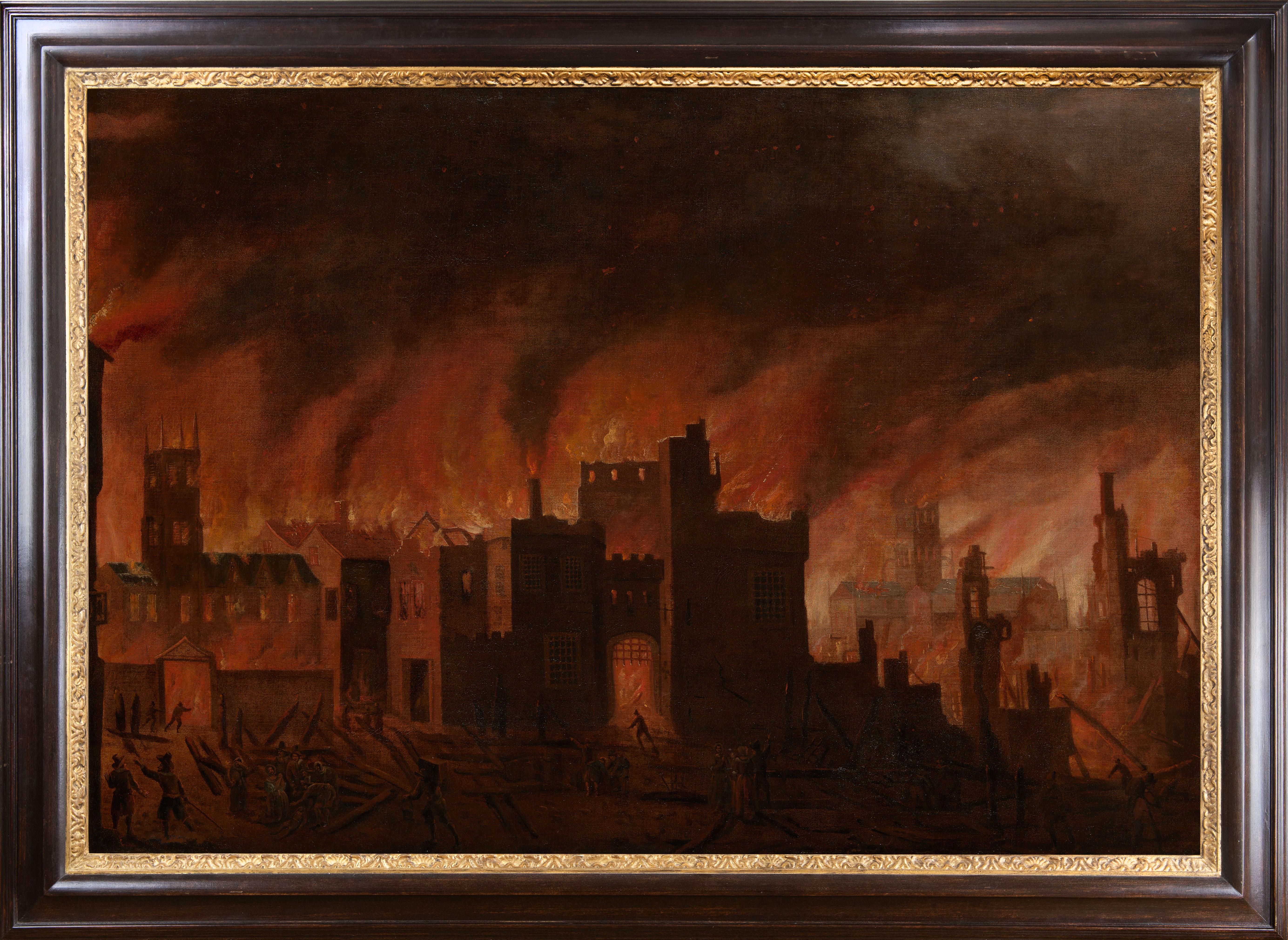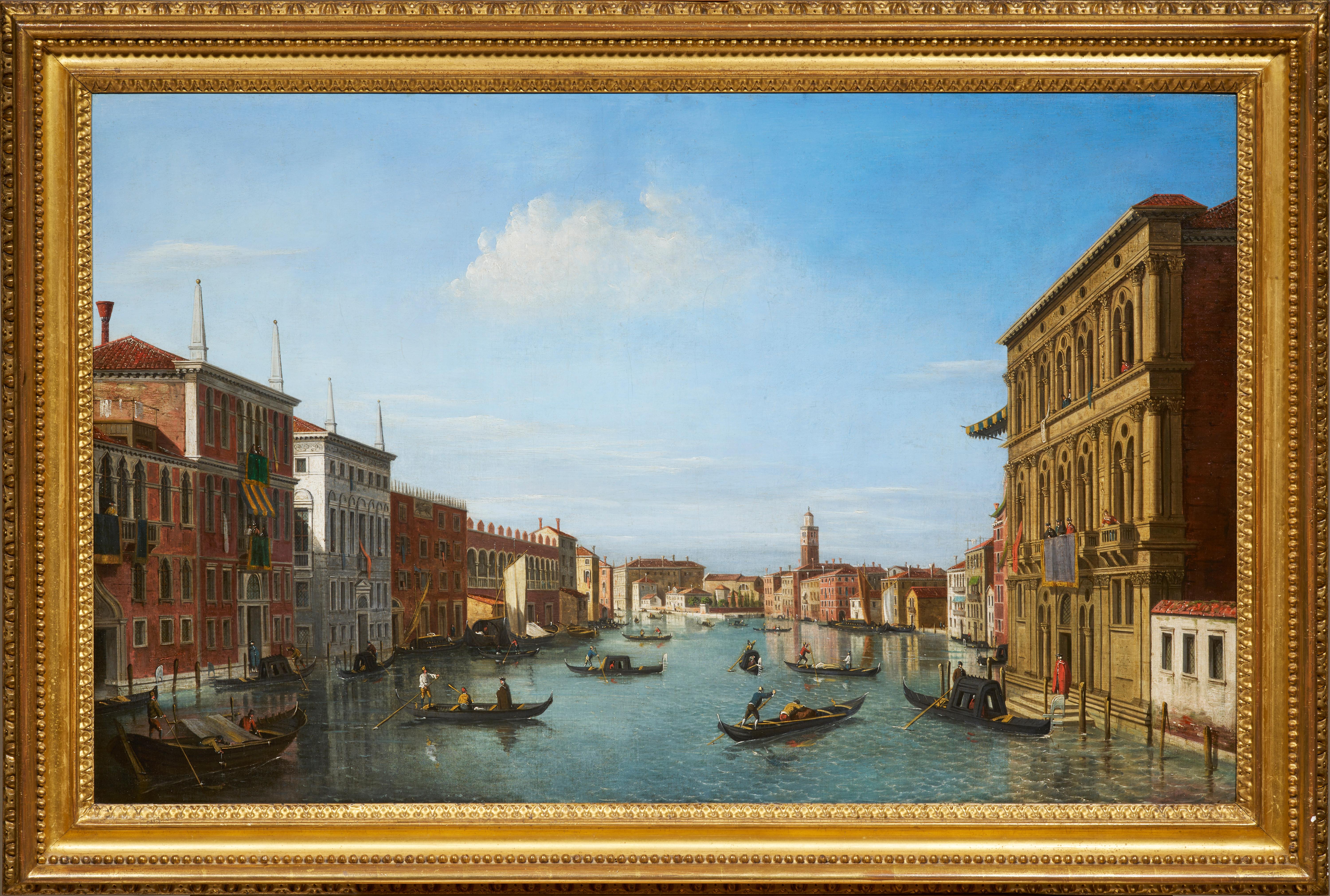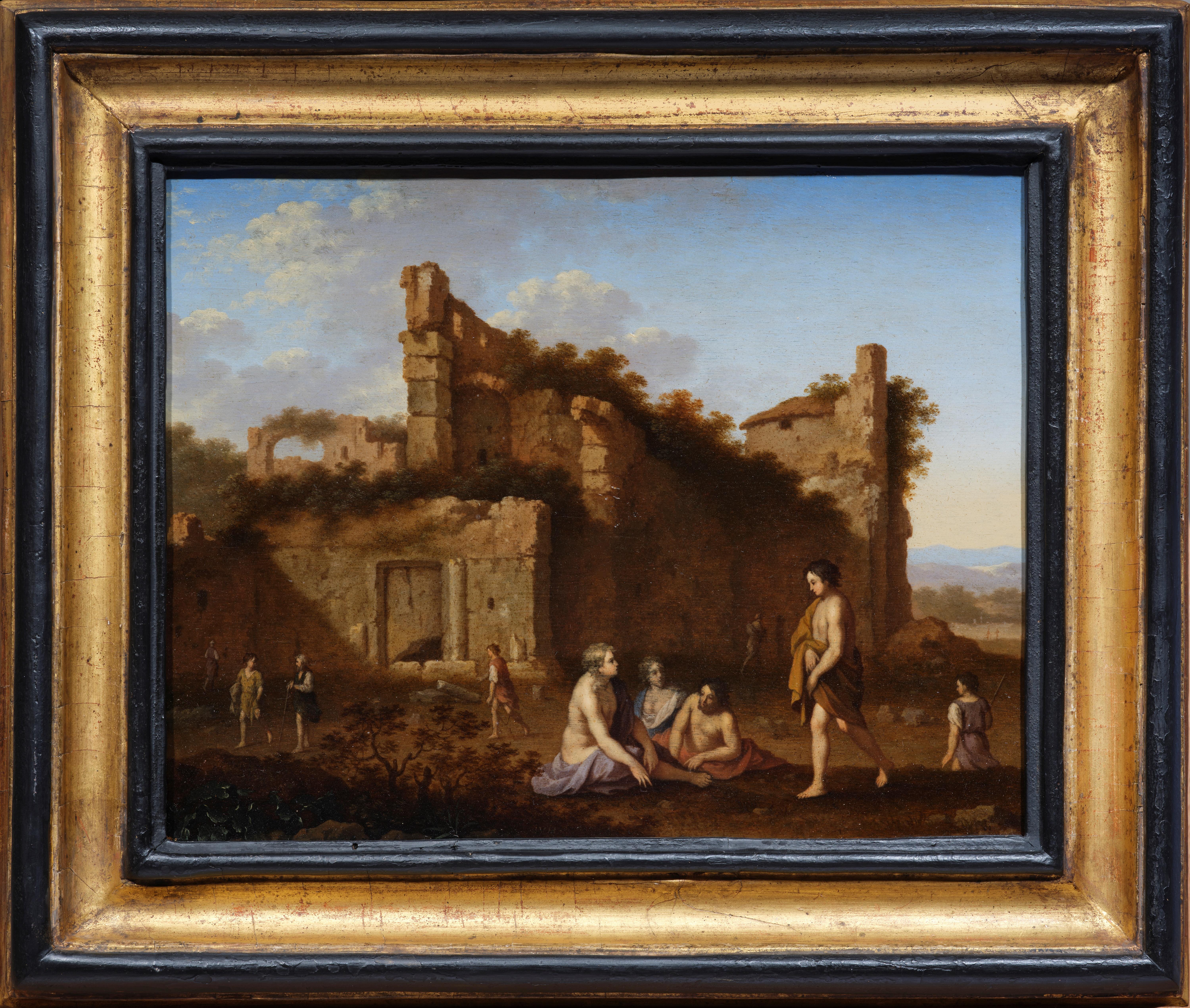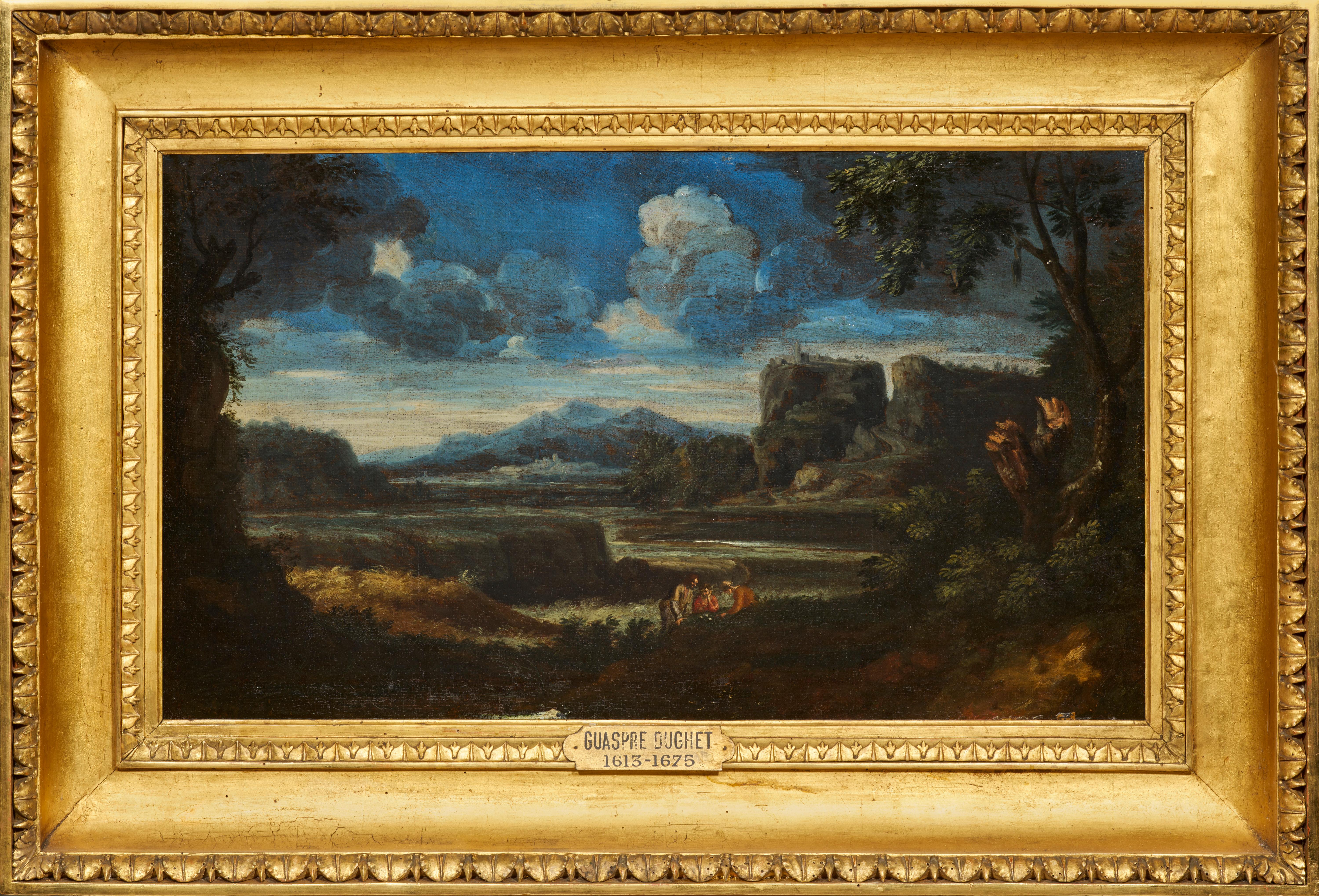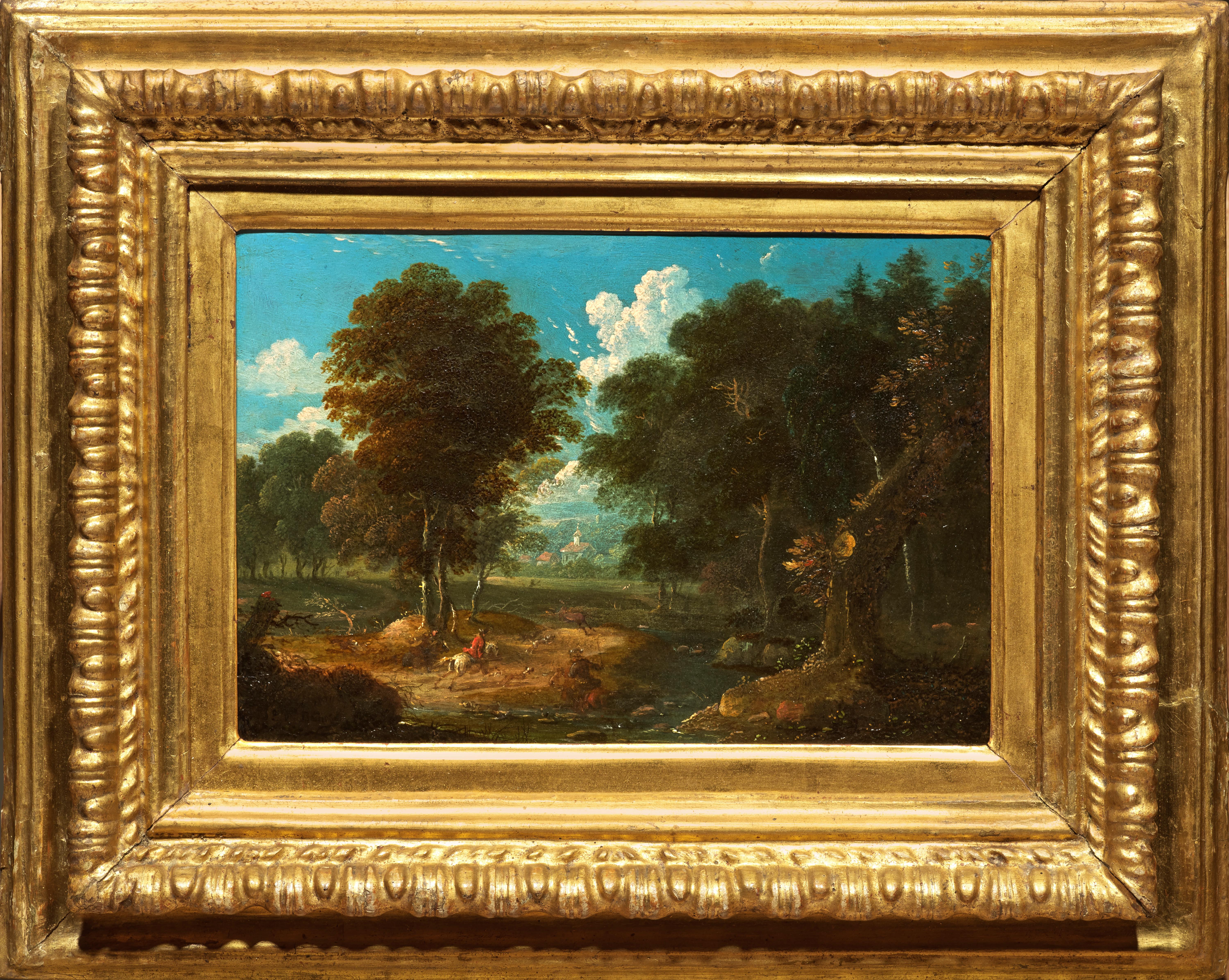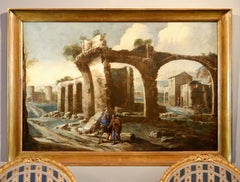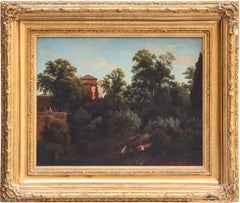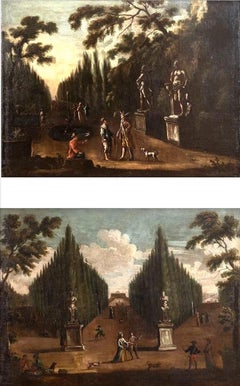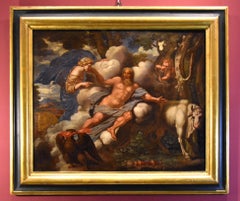
Mythological Jupiter Canini Paint Oil on canvas Old master 17th Century Italy
View Similar Items
Want more images or videos?
Request additional images or videos from the seller
1 of 13
UnknownMythological Jupiter Canini Paint Oil on canvas Old master 17th Century Italy1630-1660
1630-1660
Price:$9,489.18
About the Item
- Creation Year:1630-1660
- Dimensions:Height: 41.74 in (106 cm)Width: 49.22 in (125 cm)
- Medium:
- Movement & Style:
- Period:
- Condition:
- Gallery Location:Riva del Garda, IT
- Reference Number:1stDibs: LU988111944652
About the Seller
4.9
Platinum Seller
Premium sellers with a 4.7+ rating and 24-hour response times
Established in 2017
1stDibs seller since 2018
248 sales on 1stDibs
Authenticity Guarantee
In the unlikely event there’s an issue with an item’s authenticity, contact us within 1 year for a full refund. DetailsMoney-Back Guarantee
If your item is not as described, is damaged in transit, or does not arrive, contact us within 7 days for a full refund. Details24-Hour Cancellation
You have a 24-hour grace period in which to reconsider your purchase, with no questions asked.Vetted Professional Sellers
Our world-class sellers must adhere to strict standards for service and quality, maintaining the integrity of our listings.Price-Match Guarantee
If you find that a seller listed the same item for a lower price elsewhere, we’ll match it.Trusted Global Delivery
Our best-in-class carrier network provides specialized shipping options worldwide, including custom delivery.More From This Seller
View AllLandscape Paint Oil on canvas Italy 17th Century Quality Old master Holy family
By Antonio Travi
Located in Riva del Garda, IT
Antonio Travi, called Sestri
(Genoa, Sestri Ponente 1608 - Genoa 1665)
Landscape with ruins and biblical scene
First half of the seventeenth century
oil on canvas, 82 x 121 cm
The beautiful painting published, which presents a vast landscape with architectural ruins, fully reflects the pictorial poetics of Antonio Travi (Sestri Ponente 1608 - Genoa 1665), the first landscape painter of the Genoese pictorial school; A poetic that remains constant throughout his career: Bernardo Strozzi...
Category
17th Century Old Masters Paintings
Materials
Oil
Landscape Zuccarelli Paint Oil on canvas Old master 18th Century Italian View
By Francesco Zuccarelli (Pitigliano 1702 - Florence 1788)
Located in Riva del Garda, IT
Francesco Zuccarelli (Pitigliano 1702 - Florence 1788), circle of
Landscape with river and resting shepherds
First half of the 18th century
oil painting on canvas
cm. 60 x 93, within a carved and gilded wooden frame cm. 75 x 108
This delightful landscape view animated by a family of shepherds who rest from their daily duties should be compared to the hand of Francesco Zuccarelli (Pitigliano 1702 - Florence 1788);
In the landscapes painted by Zuccarelli the world is crystallized, frozen in a moment of idyllic quiet,
where the 'Arcadian' sense of the landscape is rendered with that pictorial vivacity, chromatic lightness and compositional grace that we find in its entirety in his painting.
By way of comparison we can compare our canvas to other compositions, including:
- Landscape with river and resting shepherds, Accademia Carrara, Bergamo
- Landscape with bridge and horseman, Accademia Carrara, Bergamo
- Landscape with river, village, fisherman and shepherdesses' (Christie's, London May 1960,
- Landscape with figures, Accademia Carrara,
- Landscape with knight and figures, Accademia Carrara
Tuscan by origin, Francesco Zuccarelli trained first in Florence with the landscape architect Paolo Anesi...
Category
18th Century Old Masters Paintings
Materials
Oil
$6,508 Sale Price
40% Off
Rotterdam Port See Italian Paint Oil on canvas 18th Century Old master Flemish
Located in Riva del Garda, IT
Pair of views of Rotterdam: The Stock Exchange building / View of the canal with the old port
Eighteenth-century Vedutist painter
oils on canvas
47 x 66 cm. - with frame 56 x 75 cm.
This pleasant pair of paintings depict two glimpses of the city of Rotterdam, investigated here as vivid documentaries of the habits and customs from the public life of the wealthy Dutch port city, as well as one of the founders of the Dutch East India Company, is an excellent example of 18th century Vedutism
We see, in particular, in the first work the monumental Palazzo della Borsa (defined as Il Beurs), designed by the architect Adriaen van der Werff in Westnieuwland, initially a place destined for legislation on trade, where merchant-bankers met periodically to exchange securities credit and enter into sales; it is located on the bank of the Nordblaak River and shot with the Gaapers Bridge in the foreground.
The second work immortalizes the docking of the ancient port of Rotterdam, with the foreground view of the two city gates (the Wester Old Hoofdpoort on the left and the Ooster Oude Hoofdpoort on the right); in the background on the left the St. Laurenskerk (Church of San Lorenzo), also called the Great Church of Rotterdam, is the only medieval structure, while on the right the English Church.
Very well executed, characterized by a marked brightness and a chromatic range with bright colors and highlighted by the contrast between lights and shadows, our canvases are a very interesting testimony of eighteenth-century Rotterdam, portraying two of the views that have historically influenced a lot on economic history of the city.
We can attribute the authorship to an author of the full eighteenth century, inspired by the pictorial style of the Italian landscape painters and whose iconography was presumably drawn from the numerous prints with perspective views made through the optical cameras.
In particular, these views of Rotterdam draw their iconographic origin from a collection of perspective prints of the most influential European cities, made by the engraver Johann Balthasar Probst (1732-1801), characterized by a remarkable refinement in the line, at the service of a sense of perspective of undoubted value, and above all characterized by a strong Nordic taste.
Descendant of a large family of Augsburg engravers, Probst contributed to making his workshop an important European publishing center between the 17th and 18th centuries, among the major German print publishers in the first half of the 18th century.
Despite his travels, including in Italy, between Venice, Rome and Naples, not all the cities he portrayed were drawn from life but taken from earlier prints and drawings and filtered through northern European clichés.
Many of these engravings have been lost and are now difficult to find on the antiques market.
Category
18th Century Old Masters Paintings
Materials
Oil
$11,009 Sale Price
20% Off
Annunciation Allori Religious Leonardo 17/18th Century Paint Oil on canvas Italy
Located in Riva del Garda, IT
The Annunciation
Florentine painter, 17th/18th century
Follower of Alessandro Allori (Florence, 1535 – Florence, 1607)
Oil on canvas 45 x 58 cm - Framed 55 x 68 cm
A sp...
Category
17th Century Old Masters Paintings
Materials
Oil
Venice San Giorgio Marina Canaletto 19th Century Paint Oil on canvas Old master
Located in Riva del Garda, IT
View of Venice with the Island of San Giorgio Maggiore
Follower of Canaletto (Venice, 1697 – Venice, 1768)
Venice - 19th century
oil on canvas
29 x 39 cm. - Framed 40 x 50 cm.
Wel...
Category
19th Century Old Masters Paintings
Materials
Oil
$4,744 Sale Price
20% Off
Carnival Rome Colonna square Cerquozzi 17th Century Paint Oil on canvas Italy
Located in Riva del Garda, IT
Carnival in Rome in Piazza Colonna
Roman school of bamboccianti (mid-17th century) - workshop of Michelangelo Cerquozzi (Rome 1602 - Rome 1660)
Oil on canvas
74 x 96 cm. - Framed 88...
Category
17th Century Old Masters Paintings
Materials
Oil
$10,737 Sale Price
20% Off
You May Also Like
19th Century Roman Landscape oil on canvas with Giltwood Frame
Located in Rome, IT
Amaizing 19' century Roman landscape depicting a part of Villa Borghese with Trinità dei Monti.
With a finely carved gilt wood coeval frame.
Measurements with frame cm 65 x78 wit...
Category
19th Century Old Masters Landscape Paintings
Materials
Oil
Pair of Italian 18' century Paintings with Gardens
Located in Rome, IT
Pair of Italian 18' century paintings , oil on canvas with Venetian Palace gardens , antiques sculptures and various figures .
Measurements with frame cm 75 x101
Category
Mid-18th Century Old Masters Landscape Paintings
Materials
Oil
Pair of Italian 18' century Paintings with Gardens
Located in Rome, IT
Pair of Italian 18' century paintings , oil on canvas with Venetian Palace gardens , antiques sculptures and various figures .
Measurements with f...
Category
Mid-18th Century Old Masters Landscape Paintings
Materials
Oil
Pair of Italian 18' century Paintings with Gardens
Located in Rome, IT
Pair of Italian 18' century paintings , oil on canvas with Venetian Palace gardens , antiques sculptures and various figures .
Measurements with frame cm 75 x101
Category
Mid-18th Century Old Masters Landscape Paintings
Materials
Oil
Outstanding 18' century Paintings The Wedding Feast of Bacchus and Ariadne
Located in Rome, IT
Pair of large painting oil on canvas with the Wedding Feast of Bacchus and Ariadne scene .
Italy 18' century .
Amazing landscape background and roman Temple with classical archite...
Category
Early 18th Century Old Masters Figurative Paintings
Materials
Oil
Pair of Italian 18' century Paintings with Gardens
Located in Rome, IT
Pair of Italian 18' century paintings , oil on canvas with Venetian Palace gardens , antiques sculptures and various figures .
Measurements with frame cm 75 x101
Category
Mid-18th Century Old Masters Landscape Paintings
Materials
Oil
Recently Viewed
View AllMore Ways To Browse
17th Century Mythology Oil Painting
Antique Animal Traps
Countryside Oil Painting
Abstract Geometric Oil Painting
Vintage Landscape Paintings
Early California Landscape
Modern Chinese Painting
Oil Painting Framed Traditional
Pioneer Paintings
Two Women Painting
Manhattan Painting
Jose Artist
Painting Nyc Artist
Rose Paintings
Abstract Expressionist City
Colorado Painting
Unusual Paintings
Early American Still Life
